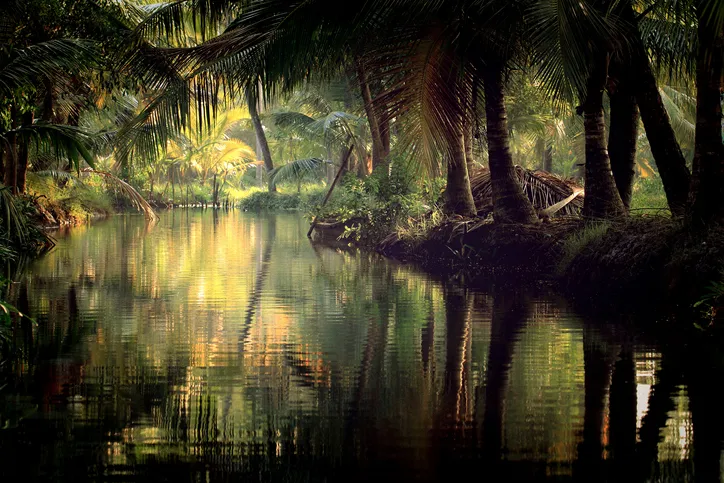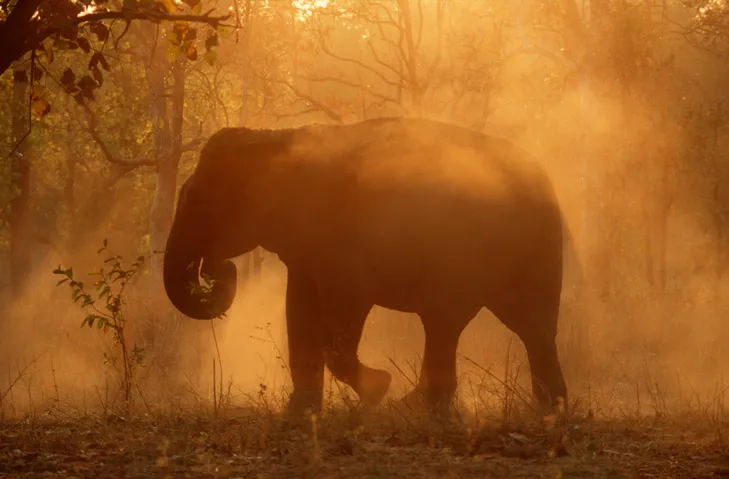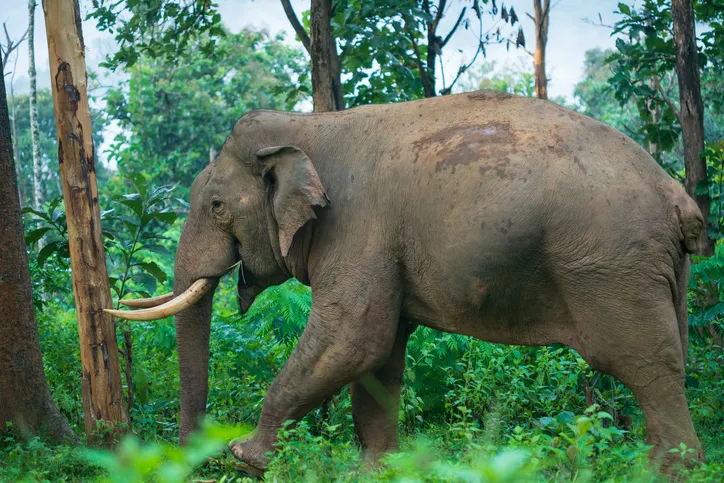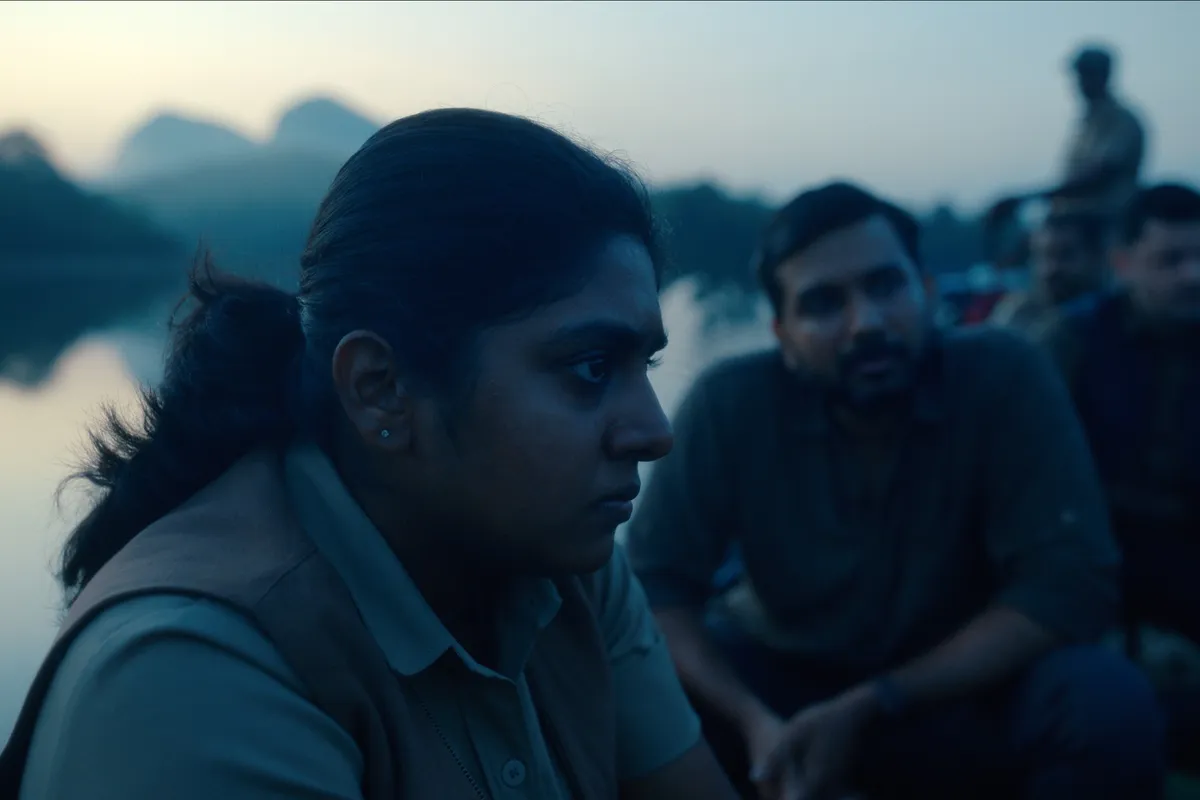“I can watch a tusker elephant for hours. It’s such a majestic animal to see in the forest,” says Jose Louies, CEO of the Wildlife Trust of India (WTI). “When you see that same animal dead, its head cut open for the tusks, it’s horrific. It’s cold-blooded murder.”
Louies and his team’s work to combat the killing of Asian elephants is the subject of Poacher, a major new Amazon Original Series. Based on the real-life events of Operation Shikar, the series covers a sprawling investigation that took place between 2015 and 2017 into elephant poaching in the southern state of Kerala, which led to 72 arrests across India, including elephant poachers, government officials, carvers and high-end ivory art dealers.
“It’s the largest ever elephant poaching case in India,” says Louies, who was Chief of Enforcement (Wildlife Crime Control) at the time. Operation Shikar originally confirmed gangs had killed around 28 tuskers. But the actual number is thought to be far higher. “I don’t say 'hundreds' because I don’t have evidence, but I don’t rule it out,” Louies tells me. “This gang was operational for 10 years. In the three years we covered, they easily brought down 50 elephants. Twenty-eight guns were seized and around a dozen people were poaching on the ground, which puts the number much higher. Poaching wasn’t limited to the area we investigated; Kerala connects with Karnakata and Tamil Nadu, and the poachers travelled to these areas, so the number could be much more. It was a challenging investigation. We never thought it would become a TV show.”
Louies, the key protagonist in Poacher, is enjoying the spotlight, not for himself but for the issue of poaching. “When you talk about the ivory trade, people think of the African ivory trade,” he says. “People don’t think about the Asian ivory trade, but it happens in India.”
- Poacher director on the compelling new crime series
- Poacher: What it's about and where to watch the gritty new wildlife crime series
Hard ivory: the lure of Asian elephants
Asian elephants are listed as Endangered on the IUCN Red List of Threatened Species. There are currently somewhere between 46,726 and 49,490 Asian elephants, compared to around 415,000 African elephants. The population has dropped from an estimated 100,000 Asian elephants at the beginning of the 20th century, with Asian elephants still found in 13 countries, including Indonesia, Thailand, Myanmar and Sri Lanka. Populations have declined by at least 50% in the last three generations, with the animals occupying just 10% of their historical range. In China, the number of wild Asian elephants is estimated at just 300.
The combined threat of habitat loss and fragmentation, human-elephant conflict, and poaching across Asia is a grave concern. “In parts of Asia, such as Vietnam, we’re facing an existential crisis of elephants going. Sumatra’s in deep trouble. Cambodia and Laos are in trouble,” says Vivek Menon, founder and Executive Director of WTI and Chair of the IUCN’s Asian Elephant Specialist Group. “Only four or five countries are holding ground. Of the 13 countries elephants are found in, around five I’m ok with and think elephants will still be there in 50 years. But with a handful of countries in South-east Asia, I’m almost certain they will lose elephants if they don’t do something dramatically different.”
India is currently thought to have around 29,000 wild elephants, especially in the biodiverse Western Ghats region, including Kerala, Karnataka and Tamil Nadu, the country home to more than half of the global population. “Elephants are revered across India,” explains Menon. “It’s the national heritage animal of India. To Hindus, which is 85% of the 1.4 billion population, it’s God. To clear obstacles in your life, you worship Ganesh. And elephants are absolutely vital engineers of the forest. They change ecosystems, opening up forests and savannahs, and creating waterholes.”
“The elephant is the national heritage animal of India. To Hindus, which is 85% of the 1.4 billion population, it’s God." Vivek Menon, founder and Executive Director of WTI and Chair of the IUCN’s Asian Elephant Specialist Group

The poaching, trafficking and trading of elephants and ivory in India is prohibited according to 1972’s Wildlife Protection Act. But despite their importance and status, poaching has remained a constant threat. In 1994, a vast elephant-poaching and ivory-smuggling ring was uncovered that involved a transnational organised crime syndicate, including the Yakuza and Triads.
“Poaching was an issue, especially in the 1990s,” says Menon, who spent two years undercover, tracking Indian ivory in China and Japan. “In the 1990s, we were losing about 100-150 elephants per year to poaching. It wasn’t like Africa, when tens of thousands were killed. But losing 100 tuskers was a big deal when adult tusker populations were very low. Today, around 20-25 elephants per year are lost to poaching.”
India’s poaching situation, is, Menon explains, “a totally different situation from poaching in Africa,” partly due to “a myth that African elephants couldn’t be tamed or domesticated. As a result, Indians valued their elephants alive, and Africans valued their elephants dead.”
“Asian ivory is called hard ivory, rather than soft ivory. Hard ivory is more valuable in Japan – it can sell for 3-5 times more. The Japanese love the lustrousness and pearl-like quality of Asian ivory.” Vivek Menon
Unlike African elephants, where males and females both have tusks, only a small percentage of male Asian elephants have tusks, meaning it’s just the adult bulls, or tuskers, that poachers target. “The bulk of international ivory is from Africa, but there is a smaller elite market of Asian ivory, which can command higher prices,” Menon explains. “Asian ivory is called hard ivory, rather than soft ivory. Hard ivory is more valuable in Japan – it can sell for 3-5 times more. The Japanese love the lustrousness and pearl-like quality of Asian ivory.”
While ivory has historically supplied international markets, including China and Japan, Operation Shikar was an eye-opener for conservationists in India by revealing a clandestine trade at home. Historically, Kerala’s ivory-carving industry had been supplied from captive elephants at temples, but poaching was also providing the valuable resource.
“Prior to this case, we thought ivory was going to China or Japan,” explains Louies. “Here, we understood there was an Indian market. The Indian gods are carved in ivory. Lord Ganesha, an elephant god, was the favourite one – an elephant god made in ivory. That was sold within India at a very high price. There were three affluent major buyers in Delhi, Kolkata and Mumbai, high-end art dealers with exclusive shops who could get very good money selling artefacts to rich clientele, including officials, bureaucrats, film stars.”
The dense forests of India also present a different challenge to conservationists than Africa’s open savannahs, making it difficult to rangers to see any criminals. Poaching gangs also wrong-footed forest patrols by unexpectedly going out to kill elephants during the monsoon, when heavy rains masked the smell and sound of humans, making it easier to approach elephants, as well as muffling gunfire. “During monsoon, there isn’t much patrolling because the river is flooded and forest patrols stick to their regular routes,” explains Louies. “By the time the monsoon is over, the rangers will see the skeleton of an elephant and write it off as a natural death. This was a major reason why elephant-poaching went undetected.”

Challenges of change
Today, human-elephant conflict is a greater threat to India’s elephants than poaching. But the combined numbers of elephants lost each year to poaching and conflict presents an existential threat. “Elephants are slow in reproduction,” Menon explains. “Elephants kill about 400 people a year and people kill about 100 elephants per year. Several hundred elephants being lost is a threat. Added to natural mortality rates, this could be the straw that breaks the donkey’s back.”
Many changes have been brought in since the 2015-2017 investigation. “We’ve invested a lot in on-the-ground ranger training, or what we call ‘forest guards’,” Menon tells me. “Twenty-five thousand frontline forest staff were trained in enforcement, especially in areas with elephants, tigers and rhinos. Where poachers are armed, we give them specialist anti-poaching training.”
- What is ivory?
- Ice ivory: how the rise of the mammoth tusk industry poses a new threat to elephants
- Is ivory banned in the UK?
“The second thing that’s changed is we have a good judiciary now,” he adds. “The judiciary in the past had no idea of poaching laws. Judges are now proactive for poaching cases and killing of tigers and elephants. The department has become much better at filing cases. Before, there were lots of loopholes, so these poachers could go out 11-12 years or more on bail and never come back to court. Now, if you’re caught, you’re punished. The whole system is better.”
New technology is also being used to combat poaching. “Several parks are using ‘electronic eyes’, cameras mounted on a tower that scan large areas of the park and send images to a central control tower, which means you can see the whole park from a workstation, and see people entering or animals moving electronically.”
“Elephants kill about 400 people a year and people kill about 100 elephants per year." Vivek Menon
WTI and partner organisation the International Fund for Animal Welfare (IFAW) have also developed HAWK (Hostile Activity Watch Kernel), a centralized intelligence system, in Kerala. “The major drawback in the past was that paper files were not talking to each other and rangers were not talking to other rangers, so we developed an overarching system where we can see everything,” says Louies. “HAWK is a real-time wildlife crime-management system where every incident of wildlife death or forest crime is recorded in a centralised system. You can log into the system and see cases, a suspect database, or look at threats, such as who is active. We now have the capability of looking at the bigger picture."

Lights, camera... and now action
Louies hopes TV shows, such as Poacher, can help educate the public in India and around the world. “This is a demand-driven industry, so if you stop people buying, the killing will stop. Poacher is a hard-hitting, in-your-face look at elephant poaching, and it will make people think twice before they buy ivory.”
But the threats to elephants and other wildlife from the international illegal wildlife trade means more urgent action is needed. “I’d like to see all forests in India, not just protected areas, looked at equally for poaching,” suggests Menon. “In the Poacher case, the poaching of elephants was outside protected areas, not inside national parks. That’s the thing we’re missing. Elephants move outside of protected areas and poachers kill them outside, so enforcement needs to look at all habitat, including outside of protected areas.
“Also, there’s a changing view of elephants because of human-elephant conflict,” Menon adds. “This is very worrying to me. Before, no one used to kill elephants, but now more people are killing elephants because of conflict, and that idea of them being ‘God’ is going away.”

Azzedine Downes, CEO of IFAW, also wants to see more action in India. “I’d like to see a stronger declaration from the highest levels of government and society that wildlife crime, like other crimes, will simply not be tolerated,” he tells me. “That’s currently lacking. While Kenya destroyed its ivory stockpile, bringing funding to anti-poaching efforts, India currently holds its own stockpile of ivory tusks. Destroying those publicly would send a strong deterrent message.”
IFAW supports the UK Ivory Act (2018), which bans the sale and purchase of elephant ivory. “Legal ivory markets have long provided what is arguably a smokescreen for illegal trade, ultimately putting endangered elephants further in jeopardy,” argues Downes. “The implementation of recent ivory bans in the UK and beyond are helping.
“It’s also vital that we break down silos in the world of intelligence and security forces that may impede the swift sharing of information, ultimately deconstructing criminal networks and stopping crime before it occurs. The point is to protect elephants. One of the most effective ways to do so is simply to ‘follow the money’ among the international crime syndicates and disrupt that flow from within.”
Global cooperation is seen as essential, as is world leaders prioritizing the fight against wildlife crime. “China has changed,” says Menon. “They’ve legislated and seem to be cracking down on wildlife crime, which I never thought I’d see in my life. It shows that even the most difficult situations can change with continuous international pressure. I’d like the international community to bring a focus on illegal wildlife crime. Not only are these species never going to come back if they’re lost, but wildlife crime connects to so many other illegal occupations, including drugs, human trafficking and terrorism. It’s completely interlinked.”
The Poacher story is also a reminder that vigilance is always needed. “We thought elephant-poaching was completely under control in India until we got wind of this underground system,” says Menon. “Wildlife crime has to be continually monitored. With any nefarious business, it keeps coming back. In a country with 1.4 billion people, there will be somebody with some need or greed for poaching. When there’s a vulnerable species, you can’t take your eyes off the problem.”
More about elephants
